VIEW PART ONE HERE: http://www.horsemagazine.com/thm/2015/08/brett-parbery-his-story-part-one/
This month, Australian dressage star Brett Parbery takes up the story of his journey from rodeo to dressage…
“After the 2008 Olympic debacle I thought, if I’m going to overcome this and dominate, I’m going to have a great 2009. I’m going to find ways to get better and better and better and that year I didn’t get beaten once. I won the World Cup final with Victory Salute and then earned the right to go back to the World Cup final in Den Bosch, Netherlands. That got me the FEI paid ticket back to Europe and at that time, I was the only Australian based rider looking to go to Kentucky so therefore I got all of the pie from EA for their training fund, so about $35,000.”
“I had known Nicole Werner and Edward Gal since 2000. Nicole was looking through the list of people coming to the World Cup Final and she sent me an email to say I could stay and train with them. That was during the time that Totilas was rising. I really didn’t want to go away from Hubertus Schmidt, but I wanted to go and see Totilas and see how they were training him and get a bit au fait with this Dutch system.”
“I spent 2010 with Edward training me around the Totilas machine and I got picked up on it all. Edward gave me great advice, I was riding well, Victory Salute was responding well, he was getting stronger. The first time I thought to myself I could give it a good shake at Kentucky, not just be on the team, but in the top group, was at Rotterdam. I didn’t have the qualifications for the CDI so I was in the CDN. I was third. Had I been in the CDI, I would have been fourth with my score. I thought, ‘I can do this’.”
“I went back to the rider hotel and people were congratulating me and I had become familiar with those on the scene. That makes you feel more confident and that you can take a risk.”
“Then we went to Aachen in 2010. When your horse gets off the truck with Totilas and you’re involved in all that, it builds your confidence. I ended up 10th in Aachen and everybody but the Americans were there. There are four shows you really want to do as a rider: Aachen, World Cup Final, Olympics and WEG. I knew it was quite special. Before then I felt like an Australian riding amongst the internationals but now I felt like one of them.”
“After Aachen we did Hickstead and I had made up my mind that if I was going to go to Kentucky and make the final, I had to do a very good Special. At those big shows, it’s all about making the next round, making the cut. Hickstead was a World Dressage Masters show and they pay very good money for the freestyle but not so much for the Special. Hans Peter thought I was mad, not going for the money! I won the Special, and 6000 euros, but it really allowed me to focus on the Special. I actually rode a dreadful Grand Prix because I was experimenting. My whole goal of Hickstead was to prepare for Kentucky.”
Brett and Victory Salute in Kentucky
“I went to WEG feeling really confident. We had a wonderful team spirit there with Hayley (Beresford), Rachel (Downs), Lyndal (Oatley) and myself. We were working together for a common cause.”
“I was the last rider. Unfortunately Hayley got belled out. Lyndal and Rachael did a great job. I think I came 15th in the Grand Prix so I made the cut. Then I rode the best Special of my life, so Hickstead had paid off, and I ended up 9th after the Special. That was the point I went to the next level. I was top 10 in the world and I was 9th in the freestyle overall.”
“Edward Gal is a master. You know, he trained Totilas, Steffen Peter’s horse, Ravel and me, that’s three horses in the top 10, which is amazing. I just love Edward as a person and a rider. Essentially he gets the horses to go with such a freedom uphill, but he contains it. There’s criticism there too; maybe he could get them to travel a little bit more forward in the extended trot and the like, but no-one can ride the collected work like him.”
“I can remember after the final in Kentucky going back to the stable and Jonny Hilberath walks in with two beers, one for each of us. He said, ‘I really like you in a lot of ways, the way you ride, the person you are. Do me a favour, don’t go back to Australia and disappear. We need you.’”
“So I went back to Australia and disappeared! In 2010 our son Jake was born. It was very difficult family wise to be away. I stuck around for a week and left because I had to ride at Rotterdam. So, I was being an absentee father and poor Mel, middle of Winter and she’s trying to run a stable. I had Dave McKinnon there, and some staff and horses in training like Weltmieser and Zeppelin. This is how great my owners are, they stuck with me.”
“Back in 2009 Clive Wunderwald approached me to see if I would ride a horse for him and I said yes. He wanted it to be a stallion and ready to go Grand Prix. When I was in Europe over 2010, I looked for a horse for him and found Lord of Loxley. All through 2010, I worked with the horse. He was in training with Edward and I was traveling frequently back to Europe to ride him. I got a bit of a taste of riding one of Edward Gal’s horses. It’s not easy to copy Edward’s style because of the way he sits, the timing and feeling that he has. He’s an incredible rider but naturally I tried to work it out and did some small tours through 2011. The reason we were doing that was that I couldn’t stay away from my family and business for another year leading up to London.”
“The goal was to aim the two horses, Lord of Loxley and Victory Salute, at 2012. In 2011, Victory Salute was not doing much because we wanted him to have a bit of a break and remain sound and fresh for 2012. I’ve learnt a few things, one is there’s no point taking a horse to heaps of insignificant shows. We took him to the Sydney CDI but what we were noticing with him was his weight was fluctuating, his coat was growing long, his energy levels were up and down and we couldn’t work out what was happening. So we were testing, testing, testing. Not one of the vets picked up that it was Cushings. Not one.”
“It presented as laminitis which we thought was a foot abscess. Basically the horse was turning toxic on the inside because of an undiagnosed sugar issue which was Cushings. At the Nationals 2011, we had to rush home on the Sunday to a horse lame in both front feet. I took a farrier back with me and he said he’s laminitic and the pedal bone was sinking. That was the worst time of our life. It’s like having a relative with cancer dying in front of your eyes. We ended up putting him down in November 2011. He’s buried on our property and I walk past him everyday.”
“Then I had to pull myself together and go back to Europe to qualify Lord of Loxley for the 2012 Olympics. EA put out a selection policy which made it almost impossible for young Grand Prix horses to qualify to make the selection events. Lyndal Oatley rang me up to let me know. I was on a beach in Coffs Harbour with the family. In their wisdom EA had decreed that that by the middle of February the horses had to have their qualifying marks of two 66% at an outdoor event before the selection event in the middle of June. In Europe! It was the middle of winter. There are no outdoor shows! So they decided to take indoor shows. Lord of Loxley hadn’t even done a Grand Prix yet. Lyndal was the same. She had done a national one, but nothing CDI.”
Brett and Lord of Loxley at Vidauban, get their MES score to go into the selection mix for the London Games (Photo: Rui Pedro Godino)
“So a few days later I’m in Poland to do two shows back to back in -35 degree temps. Then to France for one outdoor show. I got the marks, so came back home to Australia for a break before the first selection event in Mannheim.”
“We had a good test but my horse’s tongue was bad and I got 60% and rightly so. The next selection event was Compiegne and I was the third or fourth best Australian but to be totally honest, if they’d have asked me if my horse was ready for London, I would have said no. One of the selectors said to me at Mannheim, ‘Do you think you should be here?’ I was shocked. I got my two 66s and if me coming to the event made everyone ride better, I’d done my job. I’ve been in the top 10 in the world. I’m not going to present a horse at The Games if he’s not ready. I’m not going to come last, but I’m going to give him a good shot for my owner. It just didn’t work. I ran out of time. That’s twice I’ve run out of time! I’ve just got to get smarter at it.”
“I believe the best team was picked. There was so much media frenzy over the team all created from social media, which was totally without fact. But the damage that was done, in the frenzy both within the team and the perception of dressage in Australia, was very bad. The people who were involved have to claim responsibility for what they did to our sport because it damaged our sport no end and it was all unnecessary. It was a pretty nasty time but I think we are climbing our way out of it now.”
“We learnt a lot from 2012 and people need to understand that the sport is bigger than them. It may not be your day, like it wasn’t mine in 2008.”
Happier days – the Australians at the first London Selection event at Mannheim – Kristy and Lyndal Oatley, Mary Hanna, Hayley Beresford, Chantal Wigan, Rachael Sanna, Rozzie Ryan and Brett Parbery
“The way that EA has responded to that is to make everything even more black and white on paper. There is no way in the world you can write a selection policy that can cover every scenario. At some point you have to select using your knowledge and using intelligence from behind the scenes. This is the problem we have at the moment. They are so scared of people fighting them on policy that they try to write a paragraph around every situation and it’s just not going to happen. So, going forward from 2012 where we hit an absolute low from what I thought was a real high in 2010 and a great team spirit. I think last year the girls did a great job.”
“In 2013 we sold Lord of Loxley to Glock for Hans-Peter to ride, which was a good thing.”
“I went to London as the dressage coach for the eventers. While I was in Europe in 2012 trying to qualify for the Games, I was flying back and forward to England to coach the eventers so I got to work with them a lot beforehand. We were leading after the dressage on five scores. We were sitting second to Germany on three scores, which is how its measured. I loved it. I had good material to work with as they are all great riders but I also put a lot of energy and effort into it. I was proud of the result there.”
“I decided I would go home to Australia to my family and work with the horses I had: Weltmieser, Zeppelin and Good As Gold. My aim was to produce them all to Grand Prix whether they were any good at it or not. I was enjoying my role as the eventing coach and was happy to live my high performance dream through them and I was even prepared to go back to valuing if need be. Then in 2013 I was in New Zealand giving a clinic and the phone rang. It was Julie Farrell telling me that Daniella Dierks had just left them and she was wondering if I wanted to ride their horses. I rang Clemens to check the situation because I really respect Clemens and I didn’t want there to be an issue.”
“I must say the Farrells saved me a bit because I was looking down the barrel of having had my moment in the sun and I thought I might have to leave professional riding. So my team now is DP Weltmieser who is my top Grand Prix horse, Zeppelin who is Inter A/B, Good As Gold who is Grand Prix, Longview Florenzio who is owned by Glenn Fryer who is competing small tour, and Fred owned by the Oatleys.”
“The Mulawa horses are Aber Hallo who will go Inter 2 next start, Furstin Friendship, a seven year old who is between medium and advanced. She’s just come back into work after a big break. MI Sirtainly Sir who won last year’s DWTS four year old with Mulawa rider Kristian Akehurst and then there’s the new one, Larenso. We’ve had him just over a year having purchased him in France. He’s Danish bred and the most talented horse I’ve ever sat on. He’s eight.”
“The daily routine is split in two – half a day at home then half a day at Mulawa then I stay the night there and do half a day at Mulawa then half a day at home. I ride between 9-10 horses a day. I’m very lucky because all the owners that I have the same goals as me: horse health first and foremost, and good training. We’re not going to compromise our training just to win something. They’re all wonderful and very sympathetic to the fact that I have a family.”
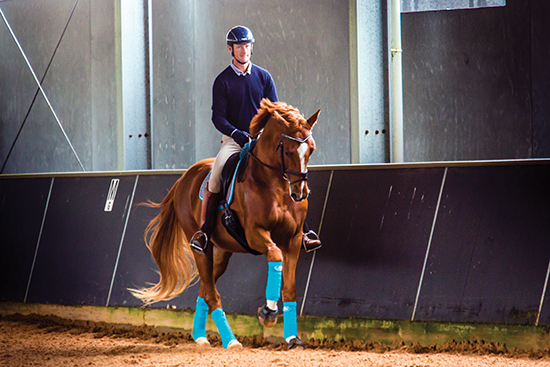 Brett and Larenso – “the most talented horse i’ve ever sat on…”
Brett and Larenso – “the most talented horse i’ve ever sat on…”
Brett Parbery, the trainer: Part 2
How to go about it
Last month Brett outlined his training system for us. This month we look at how to put it into practice.
Frame Control: You need to control the neck shape of the horse. Is the horse yielding to the contact? All different body types require all different frames. There is one accepted frame when you are competing, because that has to be poll the highest point, nose in front of the vertical and all those lovely things, however when you train that way, the horses don’t have the elasticity that they need to work through their body properly. So we have to be able to take the horse’s frame to different places without resistance. This is the hard part. Probably the biggest crux of riding dressage is frame control without resistance because the horses are using their necks to balance and they are using their bodies to balance, trying to keep over all four feet, so the moment you move their neck they feel their body change and it takes a long time to build those stabilising muscles in balance to have proper frame control.
Whether the neck is low, middle or high or long or short really depends on the individual horse. You have to identify the actual horse’s idiosyncrasies, the little things for each. Most horses will have a slight banana shape to the left or the right in their body. That will make them put weight down one side of their body more than the other. For example, if they are banana shaped to the right, they will put more weight down the left side.
The combination of frame and feet control leads to balance. That all depends on each horse. So you need to know where to put the shape of the neck. I’m convinced that for each horse there’s a perfect place for that neck to be to engage and lift the back and get the back swinging. When you have that, it’s convincing the horse to stay there long enough to build muscle to feel better there, to feel stronger there.
Now you realise how tall Brett is because Zeppelin is nearly 19hh
Therefore when people try to ride for what they call lightness they have to be careful. I don’t think lightness is a great word really to describe dressage contact, certainly in the early stages. It is later when your horse is in self carriage, carrying himself from behind and pushing the shoulders up. Lightness tends to get people to try to get their horses off the contact. The only way you can really get full control of frame and I mean millimetre by millimetre, and muscle by muscle, is to have some contact. But there is a very fine line between having contact against you or giving to you. You have to have positive contact as opposed to negative contact. I believe that lightness especially when we’re talking about young horses, would be better described as adjustability in the frame control and in the contact; to able to shift the horse’s frame longer, shorter, higher, lower, wherever you need it to be to fit the best place for that horse.
They need to follow in a longer or shorter way. You explain to the horses, which I do through walk and halt, that when I take contact if you want to make your life comfortable you will yield to the contact. I must say, that was one thing that Anky and Sjef did really well. They may have taken the horse a little bit more into an extreme position but that was the basis of their system; we take time, we stop, we teach the horse to yield to the contact in a way in which it can understand it.
Then you need to click up the kilometres in a frame that produces the sculpture. I believe every rider produces pretty much the same shape from every horse. That sculpture is created from training and the rider’s little idiosyncrasies, good or bad. So I have to work out, why do Carl’s horses look like Carl’s horses or why do Edward’s horses look like Edward’s horses? What kilometres of little things are they doing to create the muscle structure that creates the sculpture? I have to work out what I want my horses to look like and how to create that.
So I think if I can get the neck right and the balance right and get the horse really listening to me and click up the kilometres, I’ll create my way of going that I can take into the movements.
Foot control: Being able to move a footfall one centimetre or 10 centimetres or be able to put it in a place that creates a movement. People ask me, “How come you can ride such accurate tests all the time?” It’s because I work on being able to control the feet of the horse. I practice a lot, can I put the front feet there, can I put the hind feet there, can I put them more or less. I have these little checks that I try to do.
I don’t tend to ride a myriad of exercises. I have a few basic ones that I’ve worked out fit in with each of my controlling aids. So for shoulder control, walking a square – or hind leg control, a big working walk pirouette. When I see an exercise I think what aids were in that exercise. It might be go down the long side and go from shoulder in into half pass. Essentially they’re saying those aids are required to put the horse into that position. I believe exercises are for people, aids are for horses.
Brett helps Kristian Akehurst with the Totilas baby – Tea Time
Transition control: This is the real essence of dressage. Enter collected canter, halt, trot. All transitions. So we all know, to make an upward transition walk to trot is both legs. With the canter aid, everyone has a different one, some have inside leg on the girth and outside leg behind and the outside leg gives the aid or the inside leg says canter or both legs say canter. Each person has a slightly different canter aid, which is essentially why riding flying changes on other people’s horses is hard because a canter aid is a flying change aid.
Forward in the pace, I try to go alternate legs in walk because if I used both legs, the horse should trot. Then in trot both legs on the girth, then in canter just inside leg on the girth to say go and I don’t use outside leg because my outside leg in canter should be behind the girth and if I touch the horse with my outside leg behind the girth theoretically he should put his quarters in. I don’t want to have one aid that can have two meanings. There should be one aid and one response and it is the layering of the individual aids that creates the movements.
Then downward transitions and collecting the pace. Collecting the pace I believe is the half halt, come back to me, but don’t stop, don’t come behind my leg. That’s another important thing to say here. The underlying definition of the horse being in front of the leg is – can you stop riding and that horse keeps going? Not miles of forward and kicking, kicking, kicking because if you have to keep kicking, the horse is behind the leg. You put an aid on, the horse responds, you get the horse to the pace you want, you relax your leg as a reward and the horse keeps going. I should theoretically be able to be in canter, fall asleep, wake up and he’s still in canter. He should keep cantering until he’s told to stop. Then it’s in front of your leg. The true test is if you give a half halt, a waiting aid, that the horse doesn’t try to stop. The only way you can do that is to have two very clear and different aids for half halt and downward transition.
I’ve never used seat for forward and neither did Ulla or Hubertus or Edward. They only use lower leg on the girth for energy whether it be forward or upward energy. It means, “Try harder.” I only use seat for waiting or half halt. Upper body says ‘wait’, which goes into my seat and then if the horse doesn’t respond to that, I use a bit of both reins at any pace. So upper body first, hands are last and at the same time, I might try to wrap my lower leg around them to encourage them to lift up their core up underneath me so to get better in the half halt. The true test of the half halt and a true test of the training is if the pace gets better in the half halt when you re-balance the horse.
That’s the beauty of Grand Prix. That’s why I don’t get really excited when I see a fancy four year old going around. At the end of the day, I’d prefer to see a palomino pony do a great half halt than a big fancy four year old because I know how hard it is to create a good half halt and the half halt is really what dressage is about. It really is the thing that creates a collected pace from a working pace. It is the key. So having the horse stay in front of your leg, not anticipate stopping and using your body, having a soft aid to actually make it is the key.
Brett and Fürstin Friendship at Mulawa
A lot of people think half halt is a squeeze on the reins. It’s actually not. It’s a combination of aids that produces half of a halt in the horse. The difference between the half halt and the downward transition in my system is you use the half halt to prepare the pace and transition. There has to be a moment of preparation for the transition, but the actual execution of the transition can be a number of aids providing they are different to your half halt aid. That’s when you can use just a signal down the outside rein or voice aid. I tend to use a voice aid, a short tone. I use long tones to praise and short tone for transitions. They get one aid and they have to keep going and if I want them to stop they get a voice aid. No matter what we are doing with the horses, we use the same words, whether riding or loading on the float. I try to think a lot about it.
Then comes enough time to implement each one of those aids so that the horse gets strong enough to do it to their best ability. The best compliment someone can give me is, “The horse is improving,” or ”You’re always on really nice horses,” because I want to be invisible in this.
Management: Very good shoeing is important as is good communication with the farrier. We’ve used Rodney Brazzill for 12-15 years. For the feeding programme we’ve brought in Pryde’s Easi Feed and the horses get six feeds a day, three hard and three hay. We also engage the services of Caroline Foote as a nutritionist with additives. Together with Pryde’s she’s developed a pellet for us as a supplement. We also use Technyflex, a green-lipped muscle powder for joints.
Also I really teach the grooms to look after the horses well. Notice their legs, take each horse’s temperature every day, we ice them after we ride, good grooming techniques for good blood flow. All those little one-percenters actually add up. I only train in the arena four days a week. We hack out one day, one day off and one day in hand so they’re still working their muscles. I actually quite enjoy the in hand piaffe work. I love getting the opportunity to look at my horses from the ground. The ultimate degree of collection in canter is the pirouette and the ultimate degree of collection in trot is piaffe so the muscle structure of both is directly related. So when you’re working on piaffe, you’re essentially working on the muscle structure of pirouettes. I do about 20 minutes in hand. The horses go into paddocks all the time. We boot them and we bell boot them but they’re allowed to play and run around. They need to learn to sort themselves out and their legs have to get strong.
Zeppelin by Tolando (Jazz/Krack C) out of an Amati mare.
He is currently competing Inter A and B. I bought him over in Holland in 2008. He was in the IPS programme but he was culled because he was too big for them despite being the highest priced foal they bought the year they got him. He only cost about 15,000 euros and I broke him in when I was at Hubertus Schmidt’s place. I was traveling to and from Holland to ride him. He got me off in the first ride!
He’s big, he’s a monster but has the most beautiful character. When I assess his body type, he’s very high in the neck and long in the back, which is a hard combination. It’s hard to get him round enough to get him to use his back properly. The constant battle with him is to get him to use his back in a way where I can use my half halt and he comes back onto the hind legs and it doesn’t just all finish in front. With him the system has been to ride him quite deep to try to build that muscle structure so that he can lift up in his back. He just comes up in front so easily.
I decided early on that we should start piaffing him in hand at five, with the view that if it took him three years that’s fine, but I needed to teach him to use his hindlegs. So we went really slowly. Piaffe is directly related to ”pony trot”. He had to learn to trot small and then close it up enough to make a couple of piaffe steps. He has a really good piaffe now. It’s one of his highlights.
Once he gets a handle on the one tempis, he’ll go Grand Prix. He can do four or five ones but he’s quite hot with them and he has a very big canter stride so it’s trying to get him to canter smaller and not panic; to do them under his own body and not jump away.
Getting him to be energised has been easy, but frame control is the biggest challenge. He’s nearly 19hh! It also took two and half years to get a flying change on him. It was not easy. Now that he’s clean and straight and through, there’s more chance in the ones now.
If you look at the training time on a horse and you said it was 10,000 hours, you don’t want to spend 8000 hours trying to get the horse on the bit. You want to try and spend as much of that time giving the horse the knowledge, building up the muscle structure. That’s where Weltmieser’s probably been a bit easier than Zeppelin because his body type, some call it old fashioned, but I call it more practical than Zeppelin, but I bought Zeppelin thinking that was the body type. If I had to buy a body type, with my knowledge now, I wouldn’t buy his type. I’d buy slightly lower necked and shorter backed. He’s still an amazing horse though.
Here’s the next episode:

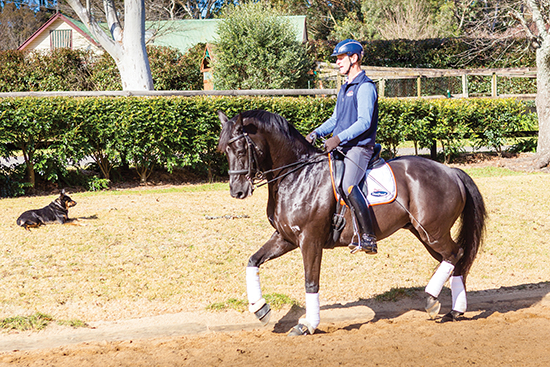
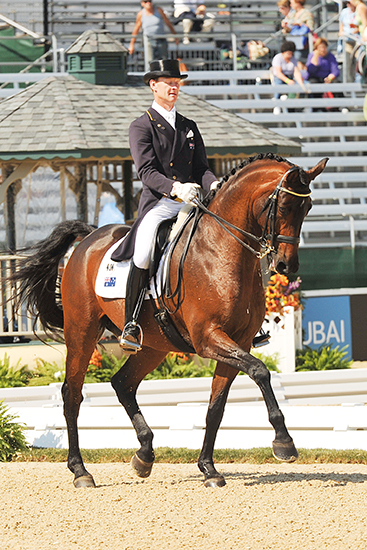
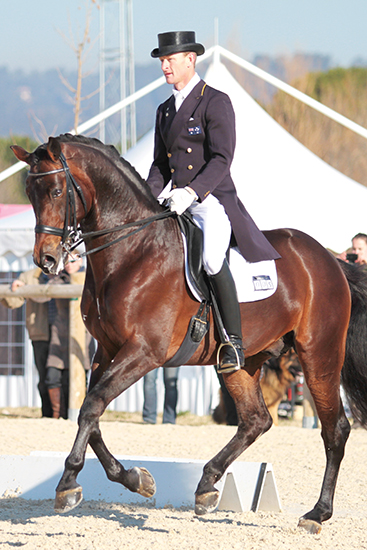
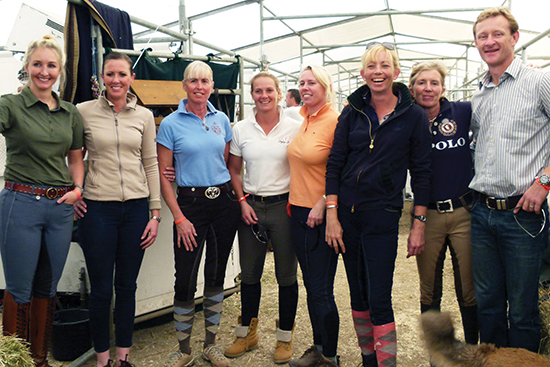
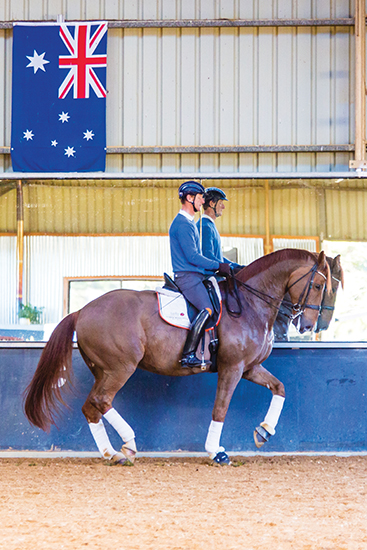
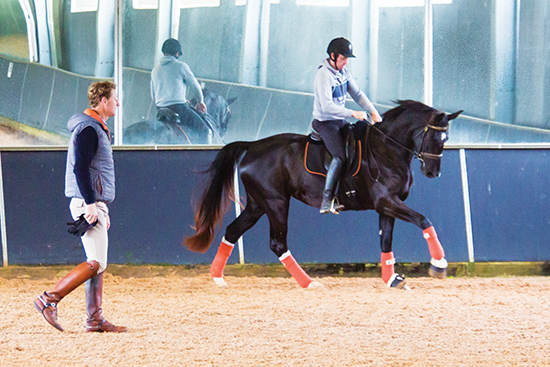
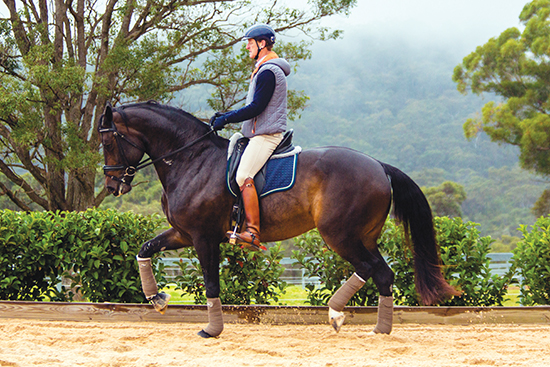
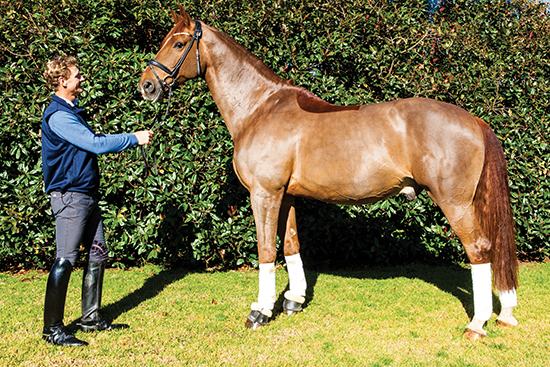
really interesting article thanks for posting
Thanks a lot, Brett. You are articulating a lot of stuff I have felt and believed (at rather a lower level than you…!)